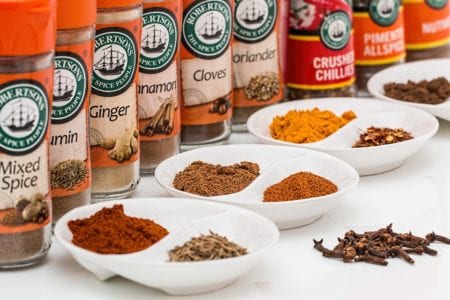 Probably you have friends who can not tolerate spicy foods and add to restaurants when ordering: “No pepper, please!”. However, experts in the culinary industry argue that such people are much less than those who favor experiment with spices. Asian and Latin American countries are great masters for cookie dishes. Fortunately, nowadays and in our cities you can try the hot dishes of different cuisines of the world or buy the necessary spices to prepare a small and edible volcano at home.
Probably you have friends who can not tolerate spicy foods and add to restaurants when ordering: “No pepper, please!”. However, experts in the culinary industry argue that such people are much less than those who favor experiment with spices. Asian and Latin American countries are great masters for cookie dishes. Fortunately, nowadays and in our cities you can try the hot dishes of different cuisines of the world or buy the necessary spices to prepare a small and edible volcano at home.
For years of forced food restraint spicy food in our country has got a negative reputation for allegedly the ability to cause health problems – from gastritis to ulcers. Undoubtedly, too sharp food needs skills of professional fire-fighting, but in moderate variations, it is not that it is not harmful, and even useful for health. Burning the stomach with lots of spices is not recommended, but a little bit of chili and pepper mix is the right addition to the diet. Let’s find out why.
Burning pepper
Chili pepper contains alkaloid capsaicin, which creates a burning taste. Scientists say that Latin Americans (such as Mexico and Brazil) have a lot of spices in their diet that are less susceptible to some types of cancer than Western populations. Studies have confirmed that capsaicin is able to kill cancer cells that have arisen in the lungs, pancreas and prehistoric glands, while not damaging healthy organs.
The Australian study also found that chili protects against the build-up of cholesterol and is able to reduce the need for insulin injections. Moreover, capsaicin prevents excessive secretion of gastric acid, since daily intake of a mini dose of chili can actually reduce the risk of ulcers.
Spices burn pounds
No one is already arguing about helping the burning seasonings fight weight – this fact has long been proven. Jalapeños, Habanero, Cayenne pepper and other spicy spices accelerate metabolism and stimulate metabolism, which in turn causes the body to burn more efficiently and much faster. In addition, the addition of chili to the menu reduces the sense of hunger between meals and serves as a good way to control stubborn weight.
Curry for lunch is a solid benefit
Indian curry (or Malaysian curry lax soup – delicious!) – is not only fragrant, but also extremely useful food, since the combination of different peppers, spices, chilies and turkeys has a positive effect on blood circulation and helps with cardiovascular diseases, preventing the formation of blood clots and strengthening blood vessels. Moreover, turmeric, the basic spice of a seasoning called curry, contains curcumin, which has anti-inflammatory properties.
Seasonings help with cold and amount
Yes, they are able to bring us to tears, but also burning seasonings help to get rid of colds and nasal congestion. Since chili peppers increase body temperature, they are also able to relieve the symptoms of flu and fever, work as an expectorant, relieve bronchial asthma and help with asthma. Scientists assume that the regular consumption of moderately spicy foods promotes not only the reduction of inflammation, the relief of pain, but also the increase in mood due to endorphins, which are released through the heating of the body.
Next time, when you feel that your mouth literally burns from the fire curry ordered in an Indian restaurant, remember that this is a natural body reaction in an attempt to develop tolerance. By practicing regularly, you will get used to the hot dishes. If your threshold of severity is still low, ask for a light version for you, and when you cook yourself, add chili gently, mixing with soft and neutral foods such as potatoes or fried vegetables. And do not overdo it: the excess of burning spices can still lead to problems with the stomach. A bit of acuteness in awesome dosages is a good habit that will give you gourmet pleasures.
Picture Credit: stevepb
